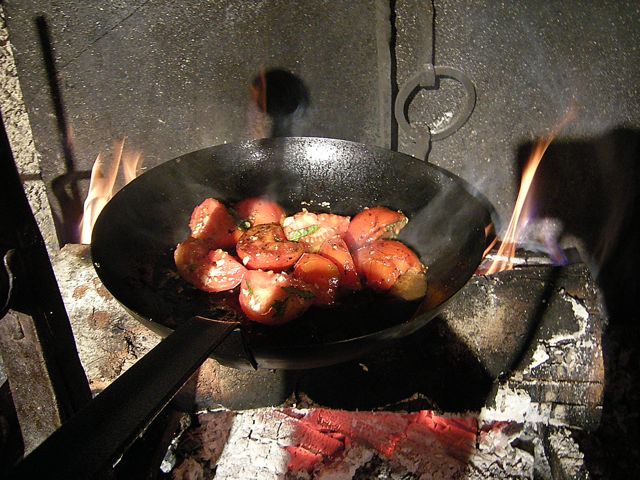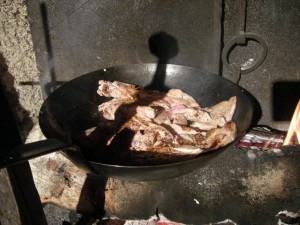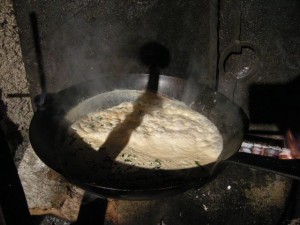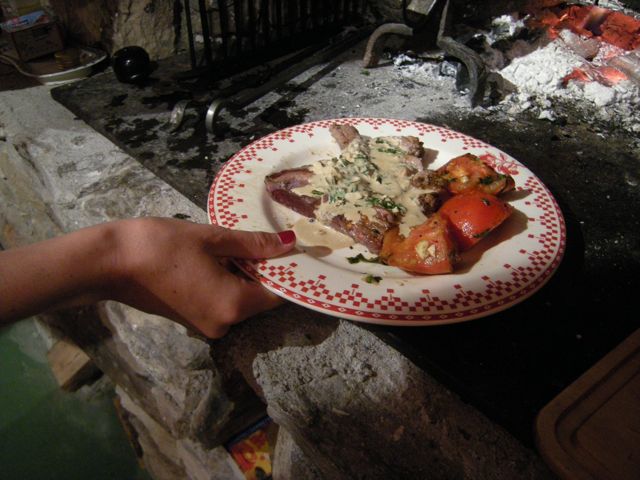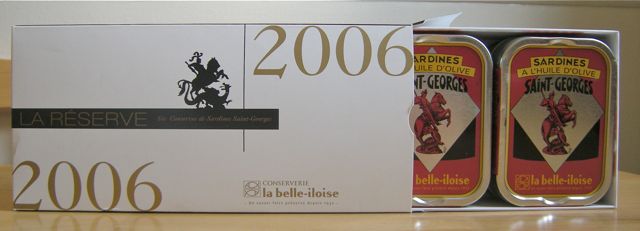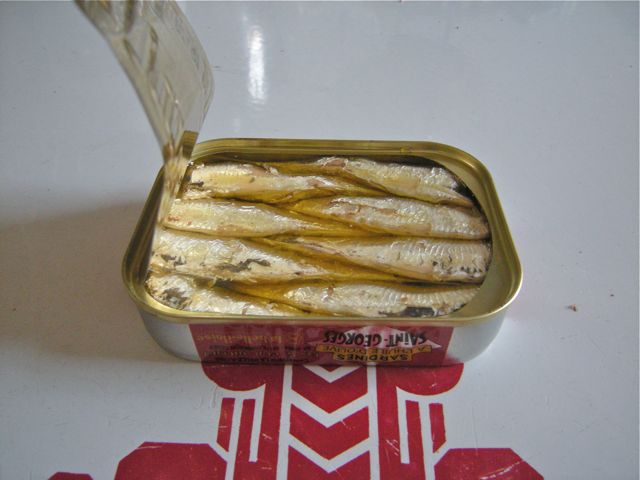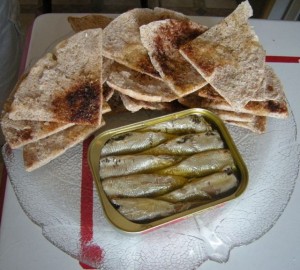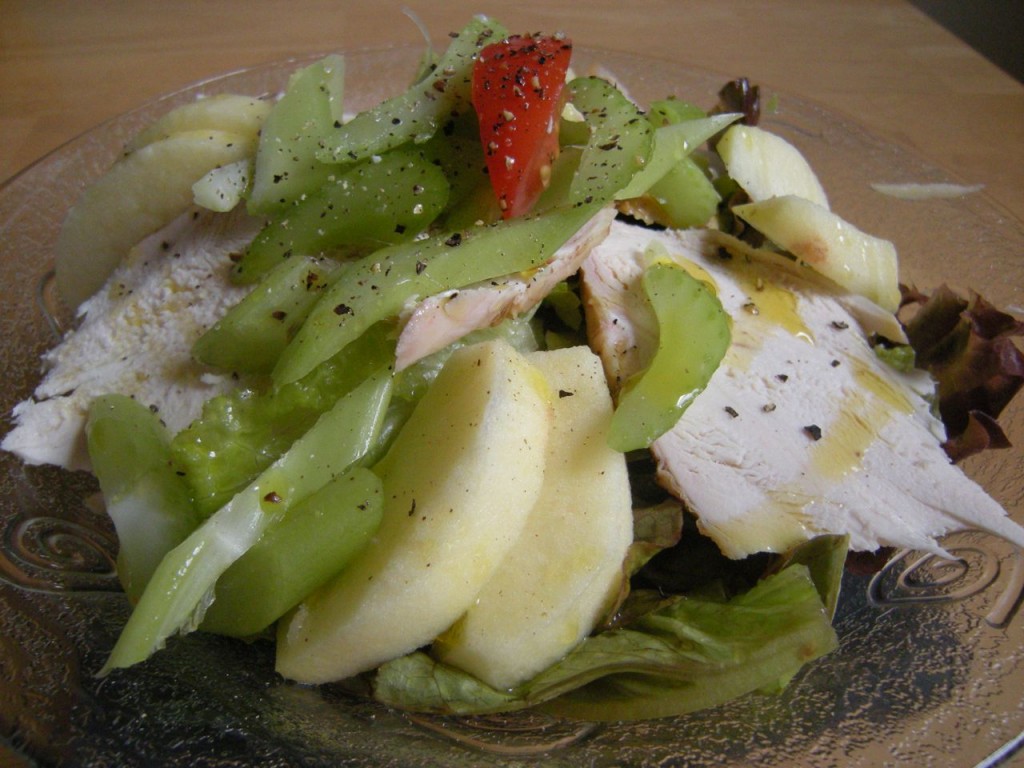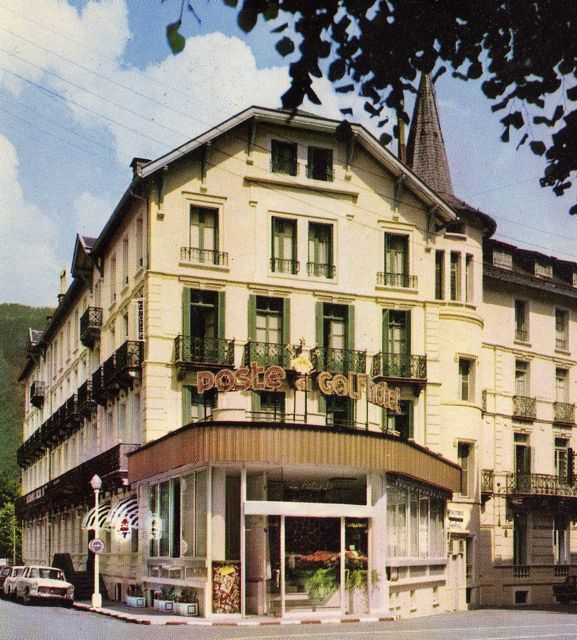When Miles (my younger son) came into the kitchen and asked quite intrigued: “What is that smell?” I pointed to the Papalo bunch sitting next to the sink.

Papalo is a native South American plant, also known as Papaloquite or porophyllum ruderale or macrocephalum. Its name comes from papalotl, —butterfly in Nahuatl and interesting (to me) in French butterfly is papillon!— The first time I encountered papalo was at a flea market Upstate New-York. A Mexican vendor was getting ready to sell Guarachas*—a dish I wouldn’t mind getting more info on. The women were setting up while the men were all sitting down having lunch. I noticed them picking leaves from the middle of the table and eating little bites with their grilled meat and tortillas.
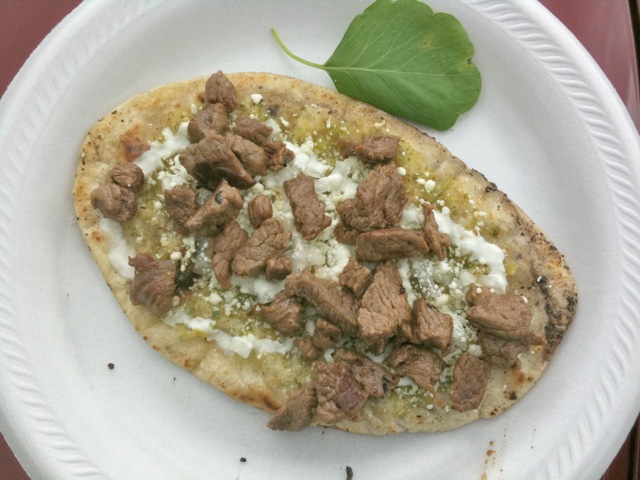
I ordered a Guaracha, I had to ask for the leaves as I wasn’t automatically given some. The lady was a bit surprised as she explained — nicely — that gringos didn’t usually care much for it. She was delighted I would try it as it was the way to eat this dish. It was love at “first bite!”; the grilled meat seasoned with lime, the green salsa, the Mexican cheese all topping a homemade corn tortilla —that looked to have had some beans worked into the dough, and the little bite of papalo to make it a truly “gastrorgasmic” moment. Papalo’s taste is condensed, pungent and close to be an entrancing flavor. It must be used appropriately and parsimoniously.
 A few weeks ago I got some papalo from Harold, owner of Carral Farm and a regular vendor at the Bay Ridge Greenmarket. He also gave me some suggestion on how to use it and recommended to also get some Anaheim peppers. I picked up a pound of fresh scallops at American Seafood (read previous blog on scallops here and here). And this is the recipe I will share with you today:
A few weeks ago I got some papalo from Harold, owner of Carral Farm and a regular vendor at the Bay Ridge Greenmarket. He also gave me some suggestion on how to use it and recommended to also get some Anaheim peppers. I picked up a pound of fresh scallops at American Seafood (read previous blog on scallops here and here). And this is the recipe I will share with you today:
Scallops With Sautéed Corn and Papalo (for 3)
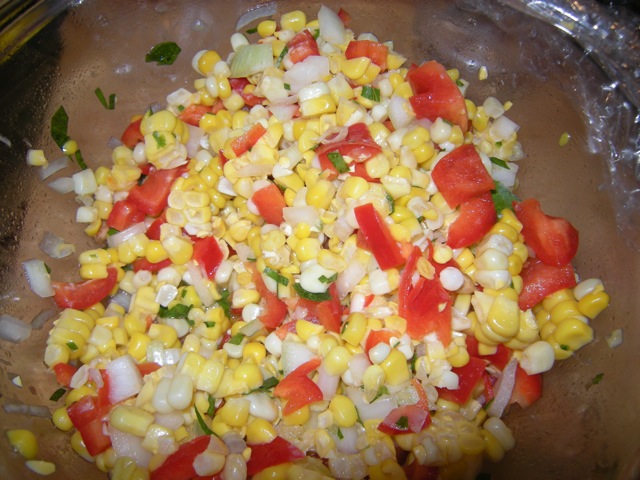
1 lb of fresh scallops
2 Tablespoon unsalted butter
1 lime juice
kernels of 2 fresh ears of corn
1/4 cup red bell peppers
1/4 cup sweet onions
1/8 cup green Anaheim peppers
9 leaves of fresh papalo
2 Tbsp brandy or Lillet
1 dollop butter at room temperature
Heat 1 Tbsp of olive oil and 1 Tbsp of butter in a stainless still or cast iron frying pan.
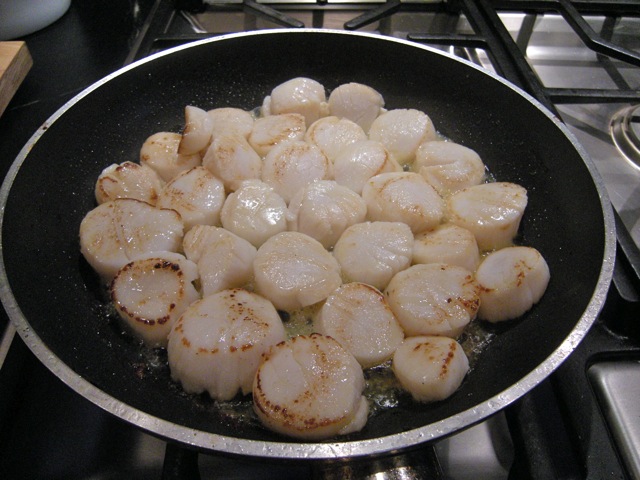
Sear scallops delicately in the pan or about 3 minutes or so per side —it will depend how thick they are. Do not overcook them. Keep them warm between two plates and reserve until ready to serve.
While the scallops are cooking, sautée all the vegetables (with only 3 leaves of papalo chopped) lightly with olive oil or/and butter (see picture above to see size of veggies).
Déglaze the pan with some brandy or Lillet. Add lime juice and retrieve all the juice that have deposited in the scallop plate.
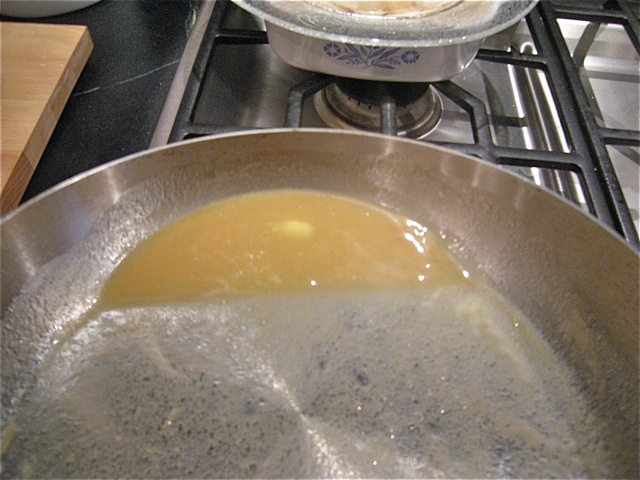
Add a dollop of soft butter and when only ready to serve “monter la sauce au beurre” —that is to swirl in, until completely melted, a dollop of room temperature unsalted butter; it will give your sauce a velvety texture and a rich flavor. We have done it before, right? Add salt & pepper to taste and voilà!
*The guaraches turned out to be huaraches. See comments below and huraches blog.


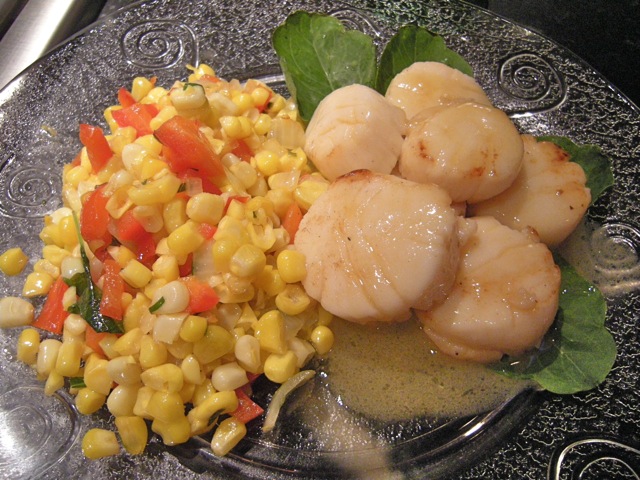
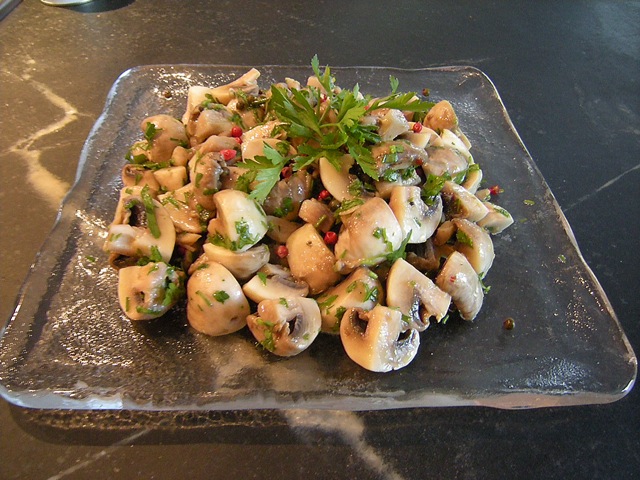


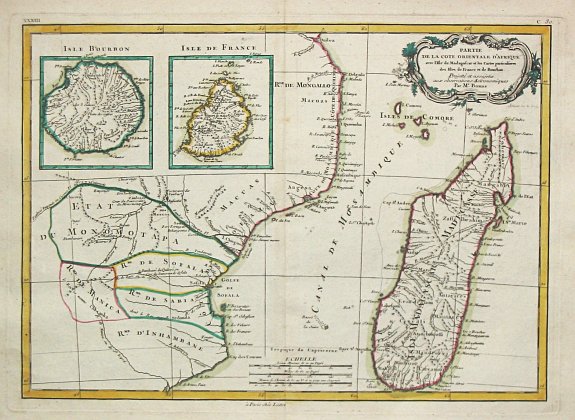

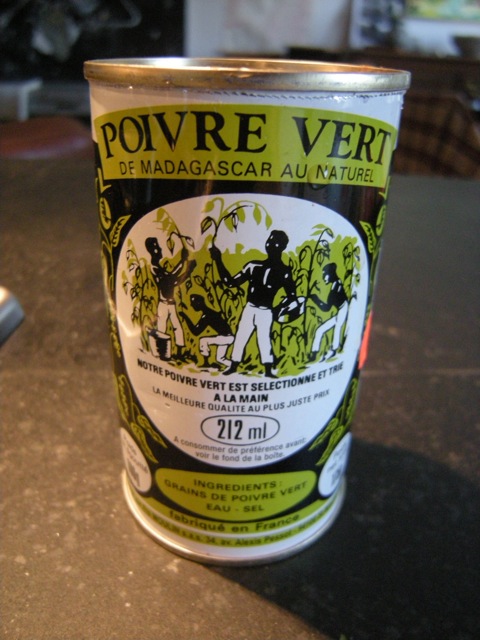 1 lb of very fresh button/white mushrooms
1 lb of very fresh button/white mushrooms